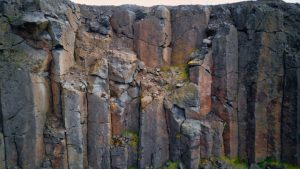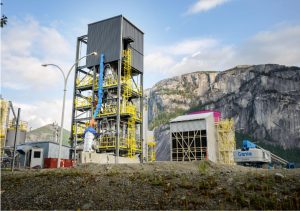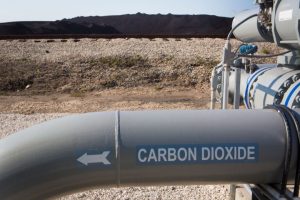Throughout its history, the Earth has changed according to different patterns, varying the composition of plants, animals, water, rock, ice and air. Geologist Juan Carlos Silva (Colombia, 1975) analyses these changes. “Isotopes, variants of atoms of the same element with different atomic weights, play a crucial role in understanding the evolution of the terrestrial system,” he says.

It turns out that during the various processes that have shaped our planet, these isotopes move between the different subsystems, such as the atmosphere, hydrosphere, cryosphere, biosphere and geosphere, “following unique patterns,” says Silva. “This feature gives us the opportunity to analyse the isotopic composition of various matrices, such as plants, animals, water, rock, ice and air, which allows us to quantitatively understand the processes that have shaped our environment, such as changes in global temperatures, fluctuations in carbon dioxide levels in the atmosphere, and variations in the pH and oxygen levels in the oceans.”
And it is this ability to quantify that helps geologists make connections between the severity of environmental changes and major biological events, such as mass extinctions.

The researcher, who currently heads the Department of Environmental Sciences and Sustainability at IE University in Spain, has always been concerned about “society’s lack of action on environmental problems that impact not only humans, but also animals,” he recalls.
“It is essential to focus more on regenerating the environment, biodiversity and water quality by transforming our daily habits, priorities and understanding of nature”
He comes from Colombia, one of the world’s most biodiverse countries. And this passion and respect for nature, which anyone who has travelled there will have sensed in the vast majority of its population, is ingrained in Silva’s mind. “It is crucial that we as a society take concrete action. Responsibility for the environment lies with each and every one of us,” he stresses.

In terms of the greatest risks to the planet, Juan Carlos Silva, as a geologist, refers to “planetary boundaries”: “These are the environmental thresholds within which humanity can safely operate to maintain a stable planet that supports life as we know it,” he explains. “Our planet has already exceeded six of the nine planetary boundaries identified by the scientific community. This underlines the many environmental challenges we face as a species and the urgent need to adapt.”
“Despite years of efforts to reduce greenhouse gas emissions, they have not been effective enough to halt the advance of these environmental phenomena”
Silva warns that despite years of efforts to reduce greenhouse gas emissions, “unfortunately, they have not been effective enough to halt the advance of these environmental phenomena.” What he says is not reassuring: “The problem is closely linked to the amount of gases that have already accumulated in the atmosphere. Even if we were able to completely eliminate our emissions, global warming would persist for at least 10,000 years because of the nature of the carbon cycle,” he says. So what can be done today? “To reverse this trend, it is imperative that we scale up technologies to remove carbon from the atmosphere through the development of negative emissions technologies and carbon capture. This is the approach we are currently working on.”
“To reverse this trend, it is imperative that we scale up technologies to remove carbon from the atmosphere through the development of negative emissions technologies and carbon capture”.
Among the technological advances that have been made in recent years, the expert highlights those that are related to the main objective of removing carbon dioxide (CO₂) from the atmosphere and storing it safely in the long term. However, he points out that there are several carbon removal technologies at different stages of development and application. The most promising of these are “carbon capture and storage (CCS), which still faces challenges in terms of cost and scale, and direct air capture (DAC), or the extraction of CO₂ directly from the air, which is still in the early stages of development and also faces significant challenges in terms of efficiency and cost.”

To these promising technologies he adds two more. “Bioenergy with carbon capture and storage (BECCS), combining biomass production with carbon capture and storage, which has the potential to be a negative emissions solution, as it can remove more CO₂ from the atmosphere than it emits.”
And finally, “enhanced chemical weathering (ECW)”, which he has been focusing on for the past three years. “It involves accelerating natural weathering processes to capture CO₂ from the atmosphere and store it in long-term stable minerals,” he says. “This technique involves crushing rocks rich in minerals such as olivine or serpentine and dispersing these particles in areas with a high flow of atmospheric CO₂, such as the oceans or soil. There, the CO₂ reacts with dissolved minerals in rainwater to form carbonates, which are then deposited and safely stored,” explains Silva.
“A key measure would be to encourage the adoption of carbon- negative technologies, which could help us counteract the collective lack of action to mitigate climate change”
With regard to preventive policies in relation to his field, which are already known at a scientific level but have not yet been implemented, Juan Carlos Silva believes that “a key measure would be to encourage the adoption of carbon-negative technologies, which could help us counteract the collective lack of action to mitigate climate change.”

For this great professional, “living every day with passion and empathy for others has been the key” to his scientific career, he confesses. “I work every day to ensure that what I do makes me happy and has a positive impact on society.” The result is a cocktail of wisdom, humility and solidarity. Success guaranteed.
Comments on this publication